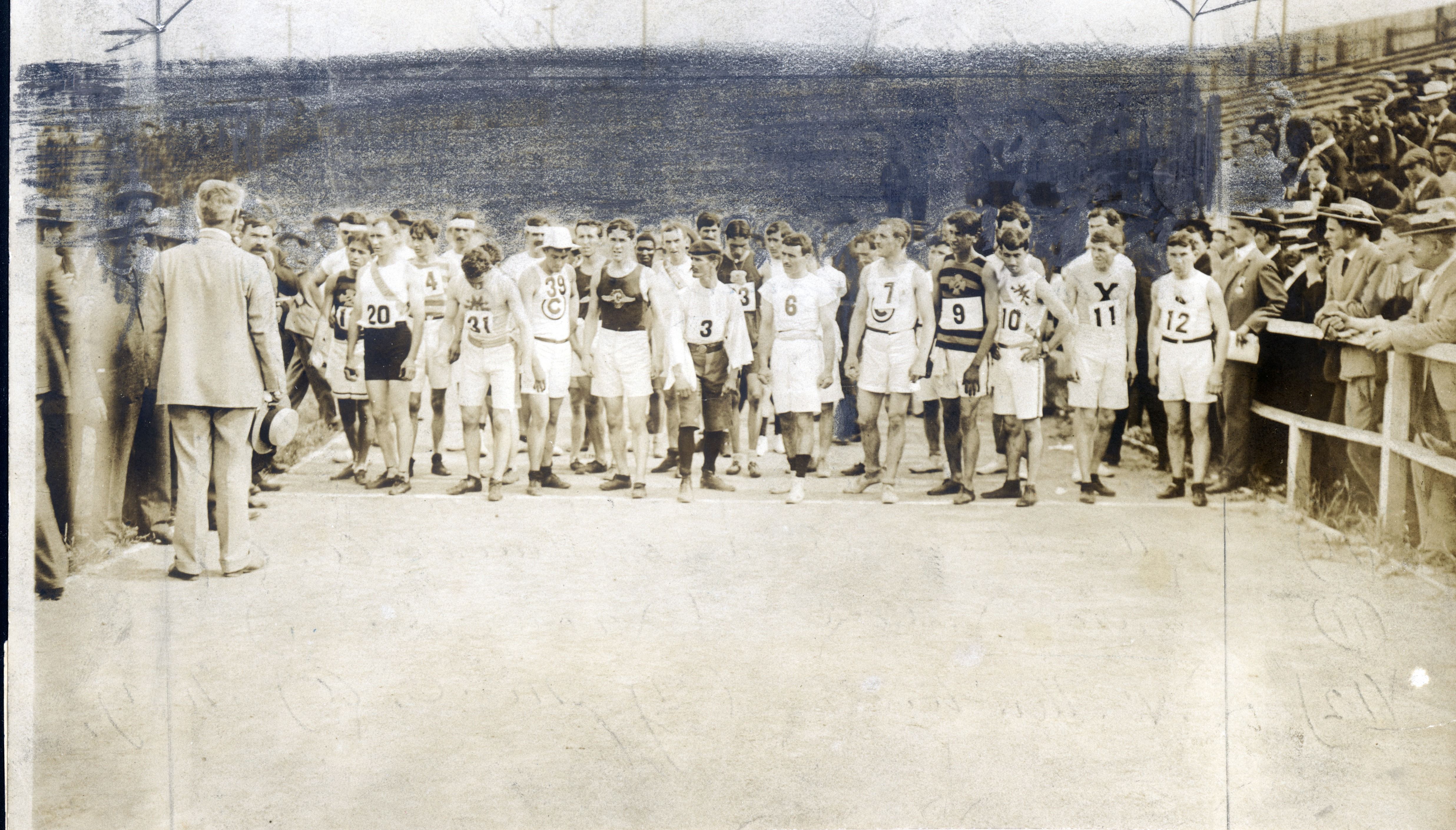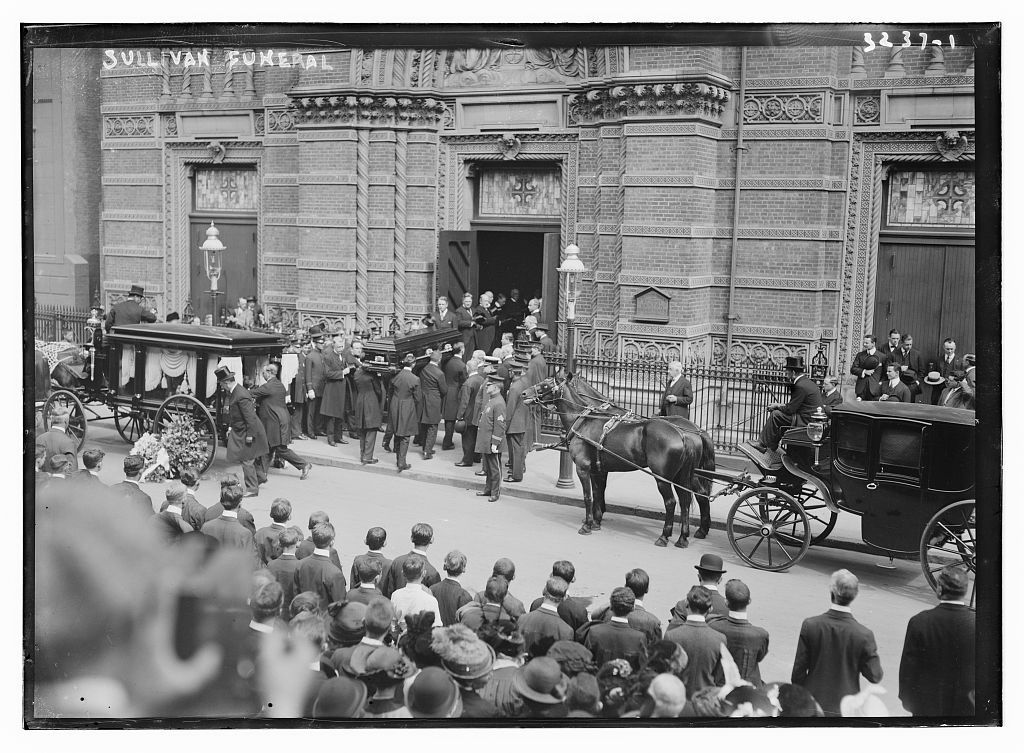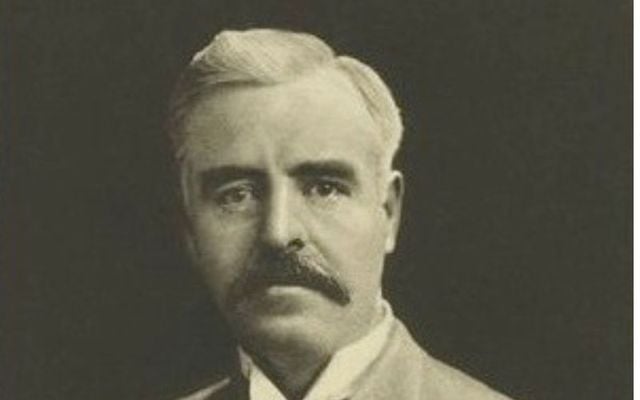As the Olympic Games take center stage, it provides an opportunity to reflect on the fascinating history of the Olympics and Ireland's long-standing connection to the global sporting event.
Ireland has an incredible historical connection to the Games albeit much of the history is hidden as Irish athletes couldn’t compete under the Irish flag until 1924. This is the story of the 1904 Olympic Games held in St Louis. At the heart of the Games were the Irish and central to the Games was an Irish American man who had parents from Kenmare.
Chicago, the windy city on the shores of Lake Michigan had won the right to host the 1904 Olympics. It promised to be a great triumph for the city rising from the ashes of the Great Fire of 1871 - except Chicago’s golden moment never came.
Down in St.Louis, the World Exposition was planned for the same year, and not wanting a rival event to steal their moment, they sought to have the Olympics moved south to their city. After much arguing, head of the International Olympic Committee and founder of the Olympic Games, Pierre de Coubertin intervened and the wish became a reality with the Games becoming linked to the World Fair.
Unfortunately, the Games would also become lost in the Fair and would drag on for over four and half months. The scene was set for one of the most chaotic Olympics on record. It was also one of the most Irish-orientated Games. Leading the charge to move the Games from Chicago to St.Louis was a proud Irish American named James Edward Sullivan who was the main organizer for the 1904 Olympic Games.
New York-born Sullivan, with his Kerry heritage, believed himself to be head of his own Kingdom – American athletics. He was a self-styled czar of amateur athletics in the United States. He had tight control over the American Athletics Association, an organization that he helped found in 1888 at age 26. He was originally a member of the Pastime Athletic Club and enjoyed some success as an athlete.
Sullivan would later join the Irish American Athletic Association, perhaps the strongest athletic club in the United States in the first quarter of the 20th century. Sullivan was involved in athletics in other ways as well. He founded the Athletics News, an early sports-based newspaper and also worked in a sporting goods business. Athletics was all-consuming for Sullivan.
Sullivan pushed American athletes to strive for professional perfection which was contrary to the ethos of amateur athletics. By all accounts, he was not an easy man, a fiery, hot-tempered man who liked to bait people especially athletic administrative rivals like Pierre de Coubertin.
Sullivan was loud and brash as opposed to de Coubertin and his reserved gentlemanly notion of athletics. They clashed regularly. With Sullivan in charge of organizing the St Louis Games, there was great despair in the International Olympic Committee and neither Britain nor France sent teams to compete.
With many other countries not traveling due to the difficulty of reaching St Louis, this opened the door for Irish America to have a field day and Sullivan was a willing participant.
The Games often became a celebration of Irish nationalism. Irish Americans were at the heart of the Games and the World Fair. St.Louis had a large Irish population centered around an area known as Kerry Patch. The Ancient Order of Hibernians in the city played a role in the organization of the Games and held a convention as part of the World Fair. As part of the Games, the local GAA club, the Innisfalls played exhibition matches in both Hurling and Gaelic Football against the Chicago Fenians. The results of these games tend to vary depending on sources. A team from Brooklyn was due to take part but it appears they did not travel.
Leading Irish athlete Tom Kiely self-financed his trip to St Louis to prove his worth. Tom Kiely is perhaps one of Ireland’s greatest-ever athletes. Between IAAA and GAA athletic championships, he won an astonishing 53 titles across a 15-year period starting in 1892.
He was also a fine hurler and Gaelic footballer. He hurled for Tipperary and was captain of the Grangemockler Gaelic football team. At a Gaelic Games meeting in 1896 at Stamford Bridge, London he played two games in one day. He hurled for Munster against Leinster and played for an Ireland team in Gaelic football against a London Irish squad.
He was a man of incredible ability and he of course wanted to test that ability against the best. Kiely hadn’t competed in the first two Olympics perhaps because of the lack of interest in the Games. But now as interest grew and time was going against him, Kiely set out to challenge himself against the best of the world. The trek was rewarding with Kiely winning the coveted All Round champion gold medal now better known as the Decathlon and declared his victory for Tipperary and Ireland! Yet his medal is still attributed to Great Britain.
While Kiely saw himself as representing Ireland, other Irish-born athletes saw success competing under the stars and stripes of the USA. Three prominent Irish-born athletes won medals for the United States in St Louis. These were John Flanagan, James Mitchel, and Martin Sheridan. John Flanagan was born in Limerick. He won gold in the hammer throw gold, and silver in the 56-pound weight throw. Coming in third in the 56-pound weight throw was Tipperary man James Mitchel.
Martin Sheridan from Mayo won gold in the discus. All three were policemen in the NYPD, a position that afforded them time to hone their athletic ability. Flanagan and Sheridan were members of the Irish American Athletic Club and Mitchel was a member of the more upper-class New York Athletic Club. The bronze was Mitchel’s sole Olympic medal, but Flanagan had won the hammer throw in 1900 and would win again in 1908. Sheridan would go on to win eight more medals, five at the Intercalated Games in Athens (1906) which are disputed by some historians as valid Olympic medals, and three at the 1908 Olympics including golds for discus and Greek discus.
The three formed part of a wider group that in more recent times is collectively called “The Irish Whales”. The Group had much success in field events at athletic meetings and the Olympics.

Love Irish history? Share your favorite stories with other history buffs in the IrishCentral History Facebook group.
Sullivan had hoped to include a section in the Olympic Games around “Irish Games”, but it appears there was not much interest in this among the Irish athletes whose preference was to better the upper-class American athletes. The success of these Irish athletes would have given Sullivan much joy as he would have known them quite well from the New York athletic meeting often held in Celtic Park, the home of the Irish American Athletic Club in Queens.
The Irish had made an impact on soccer in St Louis through the Christian Brothers and people such as Thomas Cahill who later became head of the United States Soccer Federation. This was reflected in the Games as well.
While a team from Galt, Canada won gold, both the silver and bronze teams were from St Louis. Among the Irish surnames on the Christian Brothers College silver medal team was Irish-born Joseph Lydon. Lydon would also win a bronze medal in lightweight boxing and is the only Irish man to win medals in two different sports.
The bronze medal winners in the football, St Rose Parish, had some Irish surnames as well – Brady, Cosgrove, O’Connell. To cap it all off the winners of the Lacrosse gold medal were the Winnipeg Shamrocks from Canada although Irish surnames didn’t feature strongly on the team sheet. In fact, Irish surnames were more easily found on the St Louis team that finished runner-up.
The Games provided a golden opportunity for the Irish American press. The stereotype of the Irish as lazy ape-like drunkards was prevalent but the Games provided prime examples of Irish athletic prowess.
The victories of the Irish were seen as symbols of Irish progress in American society at a time when the Irish also dominated the sport of baseball and were becoming influential in politics in places such as New York, Boston, and Chicago, and playing important roles in religion, education, and business.
The Irish American press enthusiastically reported the Games emphasizing each Irish success to its readers. The Gaelic American paper funded by prominent Irish nationalists John Devoy and Daniel Cohalan was central to this promotion. They also had a secondary aim, in highlighting Irish nationalism in the struggle against British imperialism. The medals were won for America but for Ireland as well!
The Games were a success from an Irish point of view but today the Games are mainly remembered negatively due to disorganization and confusion between the Games and the World Fair.
The Marathon, a key event in the Games descended into farce due to poor organization and officiating. The race was held on an extremely hot day, on dusty roads with minimal water supply which Sullivan claimed was to conduct research into dehydration. The roads weren’t closed so competitors had to dodge traffic as they ran.

The starting line of the 1904 marathon
Only 14 of the 32 runners finished. Frederick Lorz who was initially declared the winner was found to have cheated so Thomas Hicks who was in a hallucinating state by the end was deemed the actual winner. John Lordan from Bandon who had won the Boston Marathon in 1903 fell violently ill due to the difficult conditions and couldn’t finish. It was a miracle that nobody died.
Four years later, Sullivan was central in creating tensions at the 1908 London Olympics. As London neared Sullivan couldn’t resist bigging up the United States team. The US papers including the Irish American newspapers only loved it and helped stoke the fires created by Sullivan.
Sullivan was criticized by many in British and French athletic circles for his bombastic behavior. He would be proved correct though, with the United States enjoying much success.
Key to this success was the Irish Amateur Athletic Union who won ten of the United States twenty-three gold medals. Their overall medal haul was enough to place the club on its own in third place in the medal ranking. The American athletic team was coached by another Irish American Mike Murphy who is often regarded as the Father of American athletics.
After the 1912 Games, Sullivan got drawn into a medal scandal. Jim Thorpe, the Native American athlete who was also part Irish and part French was regarded by many as one of the greatest athletes of all time. Thorpe simply excelled at sports, be it athletics, baseball, American Football, or even some basketball for good measure. He was the first Native American to win a gold medal and won golds in both the Decathlon and Pentathlon.
Unfortunately, Thorpe would be drawn into controversy after the games. The Amateur Athletic Union headed by Sullivan was hypocritically overly protective of the amateur status of athletes. When it was revealed that Thorpe had received pay for playing baseball his medals were stripped from him. The fact that Thorpe was a Native American no doubt saw him being discriminated against. The medals were reinstated to his family many years later.
In 1911, Sullivan was on board a train that crashed at Fort Wayne, Indiana. He suffered injuries in the crash but his death in 1914 after a crash-related operation on his intestines was still unexpected. His funeral saw a large crowd gather to mourn the loss of a man who had made a monumental impact on athletics in the United States.

Crowds gather at Sullivan's funeral
Each year since 1930 the best amateur athlete in the United States is awarded the James E Sullivan Award by the American Athletic Union. Among the winners are Carl Lewis, Peyton Manning, Michael Johnson, Michael Phelps, and Simone Biles.
In 2024 the winner was basketball phenom Caitlin Clark who also won in 2022 and 2023, something that would have been an anathema to Sullivan who strongly objected to the idea of female athletics. It is fair to say that Sullivan’s legacy is somewhat mixed, but he was part of laying the foundation for American athletics to succeed which they continue to do.
*Samuel Kingston is a historian from Clonakilty, his ebook The Irish World of Sport will be released in March 2025. The book explores the Irish impact on sports around the world.
Much of the information for this article comes from Kevin McCarthy’s book Green, Silver and Gold – The Irish Olympic Journey 1896-1924. A fascinating book for anyone interested in the Irish involvement at the Olympics before Irish independence.




Comments